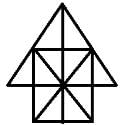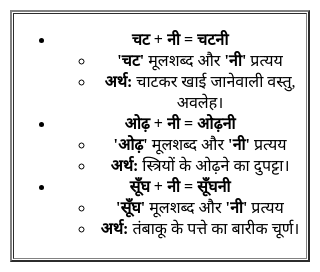HTET TGT Science Mock Test - 10 - HTET MCQ
30 Questions MCQ Test - HTET TGT Science Mock Test - 10
Blame, shame, envy, pride, embarrassment. These feelings are _______.
'रोहन गाना जाता है' रचना के आधार पर वाक्य भेद बताइए।
'वह नहीं चाहता कि तुम्हारे साथ पढ़े' रचना के आधार पर वाक्य भेद बताइए।
Direction: In these Questions, Out of the four alternatives choose the one which can be substituted for the given words/sentence.
Fear of being enclosed in a small closed space
Direction: In the following question, a sentence has been given in Active/Passive Voice. Out of the four alternative suggested, select the one which best expresses the same sentence in Passive/Active Voice.
Who is creating this mess?
Direction: A word in capital letters is followed by four words. Choose the word that is most nearly opposite in meaning to the word given in capital letters.
PREDILECTION
Direction: In the following questions, Out of four alternatives choose the one which can be substituted for the given words/sentence.
Give and receive mutually
They felt safer
P: to watch the mountain
Q: of more than five miles
R: as they settled down
S: from a distance
The Proper sequence should be:
Find out the Synonym of the following word:
AUGUST
In question below shown, count the number of triangle and Rectangle.

The average weight of a group of 15 persons increases by 2 kg when a person weighing 40 kg is replaced by Saurabh. What is the weight of Saurabh?
What did Rutherford conclude from his gold foil experiment?
When a body is weighed in a liquid, the loss in weight is equal to
As we increase the distance of an object from the eye, the image distance:
Which of the following is a non-renewable source of energy?




















